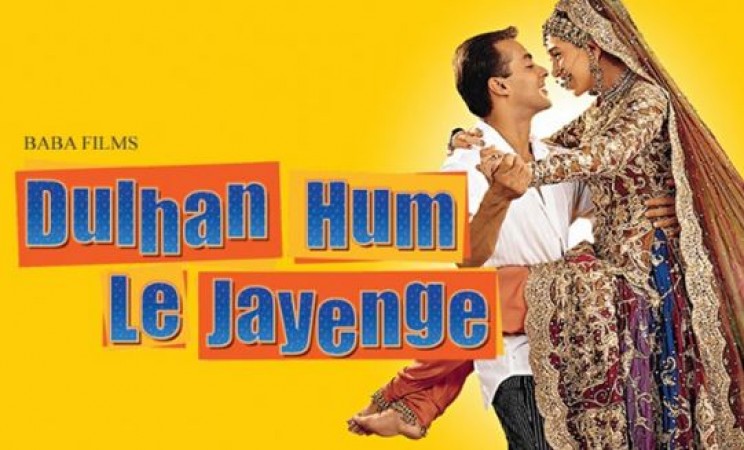
Indian film is known for its timeless melodies, and one of the unique things about Bollywood music is how it revisits and reimagines old songs. One example of musical reinvention was the transformation of the title song from the 1995 television series "AAHA" into the 2000 movie "Dulhan Hum Le Jaayenge" ("Dheere Dheere Chalna, Yun Na Tu Matakna"). Himesh Reshammiya, a multi-talented individual who has established a reputation in the Indian film industry as a singer, music composer, and actor, was the mastermind behind this transformation. The development of this well-known song will be examined in this article, including its beginnings in "AAHA" and its rebirth in "Dulhan Hum Le Jaayenge."
In 1995, the serial "AAHA" on television became very popular. The title song, which was a standout component, was well-known for its memorable music and compelling plot. The song, which was written by the well-known duo Anand-Milind, was a cheerful and catchy number that appealed to audiences all over India. Sameer wrote the song's lyrics, which praised both the beauty of love and the joys of life. The song, performed by Udit Narayan and Kavita Krishnamurthy, had a lively, youthful energy that was a perfect fit with the show's overall vibe.
The year 2000 had just passed, and Bollywood was preparing for the release of "Dulhan Hum Le Jaayenge." The romantic comedy, which was helmed by David Dhawan and starred Salman Khan and Karisma Kapoor in the lead roles, was expected to be a success. Himesh Reshammiya was hired to reenact "AAHA's" magic in order to give the film an extra dose of charm.
Himesh Reshammiya took on the challenge of revitalising the "AAHA" title track. He is already well-known for his exceptional musical compositions and soulful singing. He intended to pay homage to the original song while incorporating his distinctive style into the composition because he was aware of its significance in the minds of Indian viewers.
In "Dheere Dheere Chalna, Yun Na Tu Matakna," Himesh Reshammiya's rendition of the song, the original spirit of the song was preserved while adding modern elements. The modifications are broken down as follows:
Melodic Retention: The basic melodic structure of the original "AAHA" title song was kept. This choice was essential to preserving the song's nostalgic appeal to listeners.
Changes were made to the lyrics to better fit the context of the movie "Dulhan Hum Le Jaayenge." Unlike the original song, which celebrated life, the new lyrics focused on the romance between Salman Khan and Karisma Kapoor, who played the lead characters in the movie.
Rhythm and arrangement: Himesh Reshammiya used a rhythm and arrangement that was more modern. The instrumentation was changed to fit early 2000s trends, and the beats were made snappier to give the song a new feel.
The song was performed vocally by Himesh Reshammiya, who also gave it his soulful voice and personal touch. While paying respect to the original singers, Udit Narayan and Kavita Krishnamurthy, his performance added a contemporary touch.
The moment "Dulhan Hum Le Jaayenge" hit the big screen, "Dheere Dheere Chalna, Yun Na Tu Matakna" became a smash hit. Salman Khan and Karisma Kapoor's chemistry, the catchy tune, and the colourful picturization of the song all contributed to its appeal. Himesh Reshammiya's reputation as a music composer and singer was further cemented as a result of how quickly it rose the music charts and became a favourite at weddings and parties.
The song's transformation demonstrated Himesh Reshammiya's artistic versatility. He succeeded in giving a cherished classic new life while maintaining its integrity. His reputation as a music industry guru was cemented by the fact that this accomplishment was acknowledged and valued by both critics and audiences.
Years after its release, the song "Dheere Dheere Chalna, Yun Na Tu Matakna" is still remembered fondly and is a favourite of DJs playing at weddings and other festive occasions. It is evidence of how music has the enduring ability to cross generations and span time.
Himesh Reshammiya's transformation of the title song from the TV series "AAHA" into "Dheere Dheere Chalna, Yun Na Tu Matakna" in "Dulhan Hum Le Jaayenge" is a prime example of how traditional melodies can be updated and made accessible to new listeners. In contrast to the original "AAHA" song, which celebrated life, the updated version focused on love, making it a classic addition to Bollywood music. Himesh Reshammiya's masterful fusion of the classic and contemporary styles ensured that this song would enchant listeners for years to come, serving as a constant reminder of the timeless allure of Indian cinema's musical heritage.
Imtiaz Ali Denies Plans for 'Jab We Met' Sequel Amidst Fan Speculation
Koffee With Karan Season 8 Returns with Hilarious Self-Trolling by Karan Johar
Tiger 3 Trailer Unveiling Date Confirmed: Salman Khan and Katrina Kaif Return in Spy Thriller